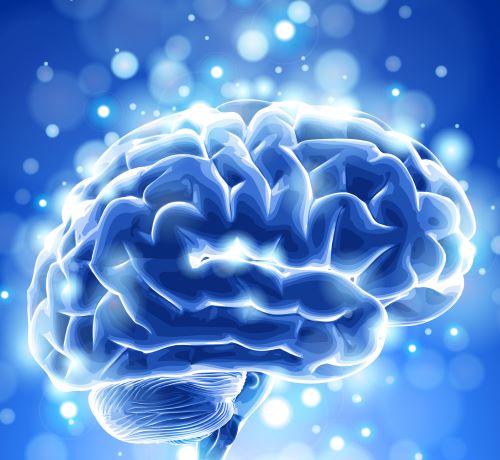Learn brain physiology first
Why begin your study of anatomy and physiology by focusing brain physiology first? Because brain anatomy and physiology displays all the fundamental processes of human physiology in one semi-isolated organ. And, it is very hard to make sense of how other anatomic systems operate when the brain is left out of the discussion.
Most textbooks start with specialized tissues under a microscope and move from there into individual organs, usually beginning with skin, bone and muscles. Unfortunately, the master regulatory organ that connects all the systems into a unified whole, the brain, is often discussed last.
There is a tenacious myth that the brain is a greater challenge to learn than other organs of the body. Yet, the brain uses the same biologic infrastructure as all the body’s other organs, albeit in an exceptionally elegant fashion. The one-organ-at-a-time approach that so often leaves the brain to be taught last, downplays the interconnected nature of an intact body.
Benefits of learning the brain first
One benefit of learning the brain first is that a clear understanding evolves of the body’s fluid compartments, ion channels, cell metabolism, electrical membranes, chemical receptors and blood capillaries. These are the basic building blocks of every organ. Each organ is different only because it employs a variation of these basic themes.
A second benefit of studying the brain first is that the concepts of communication within the body and physiologic cause and effect clearly emerge. Each body organ is influenced by ongoing events in the remaining organs. Communication between body parts is necessary and the brain is the master communicator.
Third, it is almost impossible to understand physiologic function without some knowledge of the nervous system. The three master communication systems connecting distant parts of the body are the nervous system orchestrated by the brain, the cardiovascular system and the endocrine system. Blood pressure in the vasculature and heart contractility is regulated by the autonomic component of the brain. And it has become impossible to separate endocrine activity from brain function.
Physiologic function
Physiologic function is described by using a limited number of ideas over an over from one biologic compartment to the next. When learning the brain, your become very familiar with these basic themes. Three major themes needed to explain brain function are body fluid compartments and their maintenance, membrane ion channel specificity, and the concept of receptors and ligands.
Fluid compartments
Maintenance of the composition of the body’s fluid compartments (cell cytoplasm, interstitial fluid, blood, and in the brain cerebrospinal fluid) very seldom gets the attention it deserves. Yet, a major portion of the body’s total metabolic energy is devoted to maintaining the integrity of each of its fluids.
And, nowhere in the body is maintenance of the fluid compartments more elegantly accomplished than in brain. A constant differential in the quality of the fluids in various compartments makes brain’s electrical activity possible.
Variations of the brain’s methods for quality control of cell cytoplasm and interstitial fluid are used by every organ of the body. A stable difference in the concentration of electrical particles, charged ions, in these two fluid compartments is equally important at skeletal muscle and cardiac muscle.
It is also vital to the kidney’s process for cleaning waste material from blood and a myriad of other physiologic processes. Understanding this aspect of physiology delivers a platform that simplifies study of all anatomic organs.
Ion channels
Well-documented ion channels in the membranes of neurons that are responsible for its electric signaling represent another prototype used widely throughout the body. Ion channels are composed of large proteins that snake through the lipid layers of a cell’s membrane. They form passages friendly to water-soluble molecules and they respond to triggers that open and close them.
When ion channels are open, the cytoplasm within a cell can communicate with the interstitial fluid surrounding the cell. Different organs use various means to control the opening and closing of their membrane channels. While triggers that regulate the channels vary from cell to cell, the ion channels themselves are similar in structure throughout the body.
Various outcomes gained by the presence of ion channels depend upon the strategic location of the channel proteins and their physiologic triggers. Controlled cross talk between cytoplasm and interstitial fluid is an explanation employed by physiologists for major functions of all the body’s organs.
Receptor and ligand
Another type of specialized protein used throughout the body is named a receptor. This is a broad class of proteins found at various locations within cells and attached to membranes. Receptors initiate a change in cell processes when they encounter a specific small molecule called a ligand. Receptors are major players in the nervous system and the endocrine system.
The brain uses a wide variety of ligands called neurotransmitters for brain receptors. Information is passed around in the brain by neurotransmitter. Neurotransmitters released by one neuron activate receptors on neighboring neurons setting in motion changes in the receptor bearing cells.
This receptor ligand interaction and subsequent cellular response is the same paradigm used by hormones throughout the body to exert their effects. While details of the outcome of activation of brain receptors is different than the outcome of receptor-ligand interaction in the rest of the body, the design of the receptor proteins follow the same patterns everywhere.
Anatomic variation
It is so easy in anatomy class to believe that human anatomy is fixed. So much time is focused upon learning the names and placement of muscles and bones that it is possible to forget anatomy is constantly being restructured within the range of an overall pattern. Anatomy can be thought of as a 3D printout of an organ’s physiology with the fine details being constantly remolded.
There was also a time when neuroscientists thought that the neuron connections in the brain were fixed in place once the brain finished maturing at puberty. Now it is clear that connections between neurons come and go depending upon how actively they are used. It is also believed that neurons act together in groups and that the efforts shared by various groups shifts with time depending upon environmental circumstances.
Adopting the idea of a system in motion is a great first step for students new to human physiology. Textbooks draw everything including the basic molecules, fat, protein and sugars, as static pictures. While such drawings help to describe the basic structures, they represent the real entity very poorly. All parts of these building blocks of the living body are in constant motion. And because the molecules are mobile, all the organs of the body are a mass of activity.
So where can you find all the information you need to begin your study of brain science? Try my new book “Inside the Closed World of the Brain, How brain cells connect, share and disengage”. This book includes the basics of brain anatomy and physiology all in one place.
Further reading:
2017 Virtual Tour Inside the Closed World of the Brain
Your Plan for Learning Physiology
Do you have questions?
If you want to know more about how the human brain works, please put your questions in the comment box or send me an email at DrReece@MedicalScienceNavigator.com. I read and reply to all comments and email.
If you find this article helpful share it with your fellow students or send it to your favorite social media by clicking on your favorite social media button.
Margaret Thompson Reece PhD, physiologist, former Senior Scientist and Laboratory Director at academic medical centers in California, New York and Massachusetts is now Manager at Reece Biomedical Consulting LLC.
She taught physiology for over 30 years to undergraduate and graduate students, at two- and four-year colleges, in the classroom and in the research laboratory. Her books “Physiology: Custom-Designed Chemistry”, “Inside the Closed World of the Brain”, and her online course “30-Day Challenge: Craft Your Plan for Learning Physiology”, and “Busy Student’s Anatomy & Physiology Study Journal” are created for those planning a career in healthcare. More about her books is available at https://www.amazon.com/author/margaretreece. You may contact Dr. Reece at DrReece@MedicalScienceNavigator.com, or on LinkedIn.
Dr. Reece offers a free 30 minute “how-to-get-started” phone conference to students struggling with human anatomy and physiology. Schedule an appointment by email at DrReece@MedicalScienceNavigator.com.


